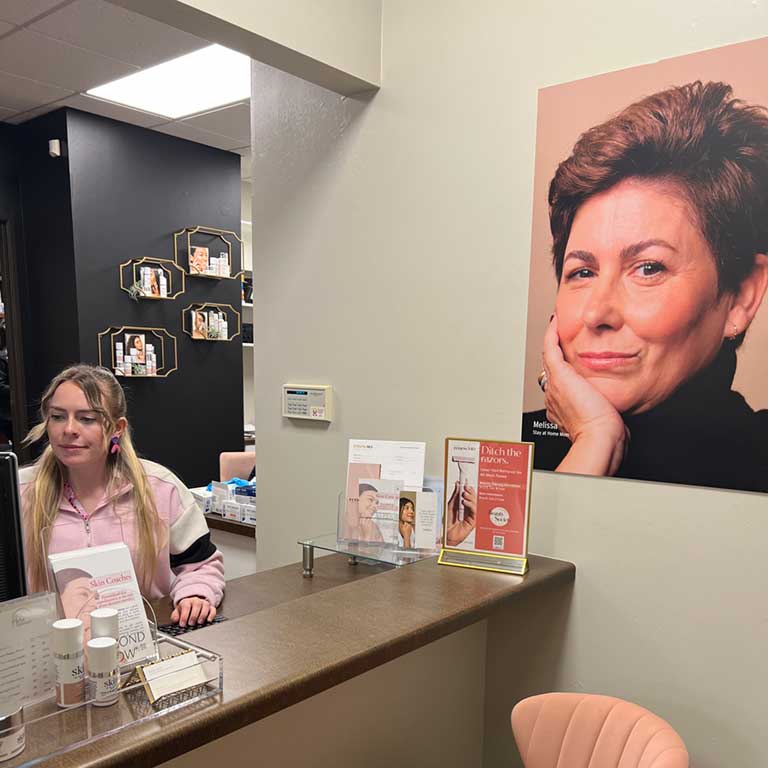Pregnancy is certainly an astounding part of human nature, although it can come with significant changes to lifestyles and, of course, our bodies. However, people tend to overlook how much parenthood changes our skin. While these changes are less commonly discussed, they can be significant and take a toll if left unnoticed. It is essential for child-bearing individuals to understand how hormonal shifts and other factors influence skin during and after pregnancy.
On The Skin Report podcast, Dr. Simran Sethi, an Internal Medicine doctor and the Founder and Medical Director of RenewMD medical spas, discusses the science behind skin. The podcast was created to educate listeners on all things related to science-backed skincare and skin health, including how the skin changes during pregnancy.
Keep reading to learn about pregnancy’s effects on the skin and how child-bearing people can address pre and post-natal skin concerns.
What to Expect for Your Skin
When it comes to hormonal shifts during pregnancy, estrogen and progesterone impact our skin the most. After all, during just one pregnancy, a woman produces more estrogen than she does in a lifetime!
On season 1, episode 16 of The Skin Report podcast, Dr. Sethi explains the skin conditions, hormonal fluctuations and other effects that women may experience during pregnancy, especially women of color. Today, we’ll be discussing three of the most significant skin conditions that can occur due to pregnancy – hyperpigmentation, hormonal acne, and stretch marks.
Hyperpigmentation
A common side effect a pregnant person may experience is Hyperpigmentation, or increased pigmentation. This can often occur in two ways, either in localized areas like the midline of the abdomen or as a condition called melasma.
This vertical line of hyperpigmentation, also known as linea nigra, is standard in most pregnancies, but melasma is less common. This condition refers to darkened patches of skin that occur on the cheeks, upper lip, and forehead. Melasma is rarely experienced in people with very light or very dark skin and most commonly seen in women of Asian, Indian, middle eastern, Latino, and North African descent.
The condition occurs due to increased activity of melanocytes, a person’s melanin-producing cells. While we are unsure of the exact reason, we know melasma is most commonly seen in pregnant patients, frequently occurring during the second and third trimesters.
Hormonal Acne
Pregnancy causes intense levels of estrogen, which can impact the skin through effects like increased sebum production – and increased acne lesions. Hormonal acne can especially be seen in the first and second trimesters, as that is when estrogen levels are highest.
Fortunately, this acne, which is commonly seen as a pregnancy side effect, is usually not cystic and not a cause for professional help. Dr. Sethi explains that in her medical aesthetics practice, she rarely sees women with hormonal acne during pregnancy as it’s generally milder and clears up once the pregnancy has reached its end.
Stretch Marks
Stretch marks are a common and completely normal side effect of pregnancy as the body changes and grows. Stretch marks form when the skin’s epidermis is stretched quickly beyond its capacity, causing tears in the skin’s connective tissue, revealing blood vessels that become visible through the skin.
While stretch marks are common during pregnancy, you should remember that they cannot be prevented using topical products. So steer clear of products claiming to be miracle “cures” as genetics play a more significant factor in stretch mark formation than products applied externally to the skin.
Addressing Pregnancy Skin Effects
You are probably wondering how you can effectively approach treatment for your skin conditions. While some skin conditions like hormonal acne often clear up on their own after pregnancy, others like stretch marks can be a bit more difficult to manage safely.
Fortunately, Dr. Sethi shares her expertise on how you can care for your skin during pregnancy and address pregnancy skin concerns on The Skin Report podcast. Tune in to Season 1, Episode 16, to learn more!








Leave A Comment